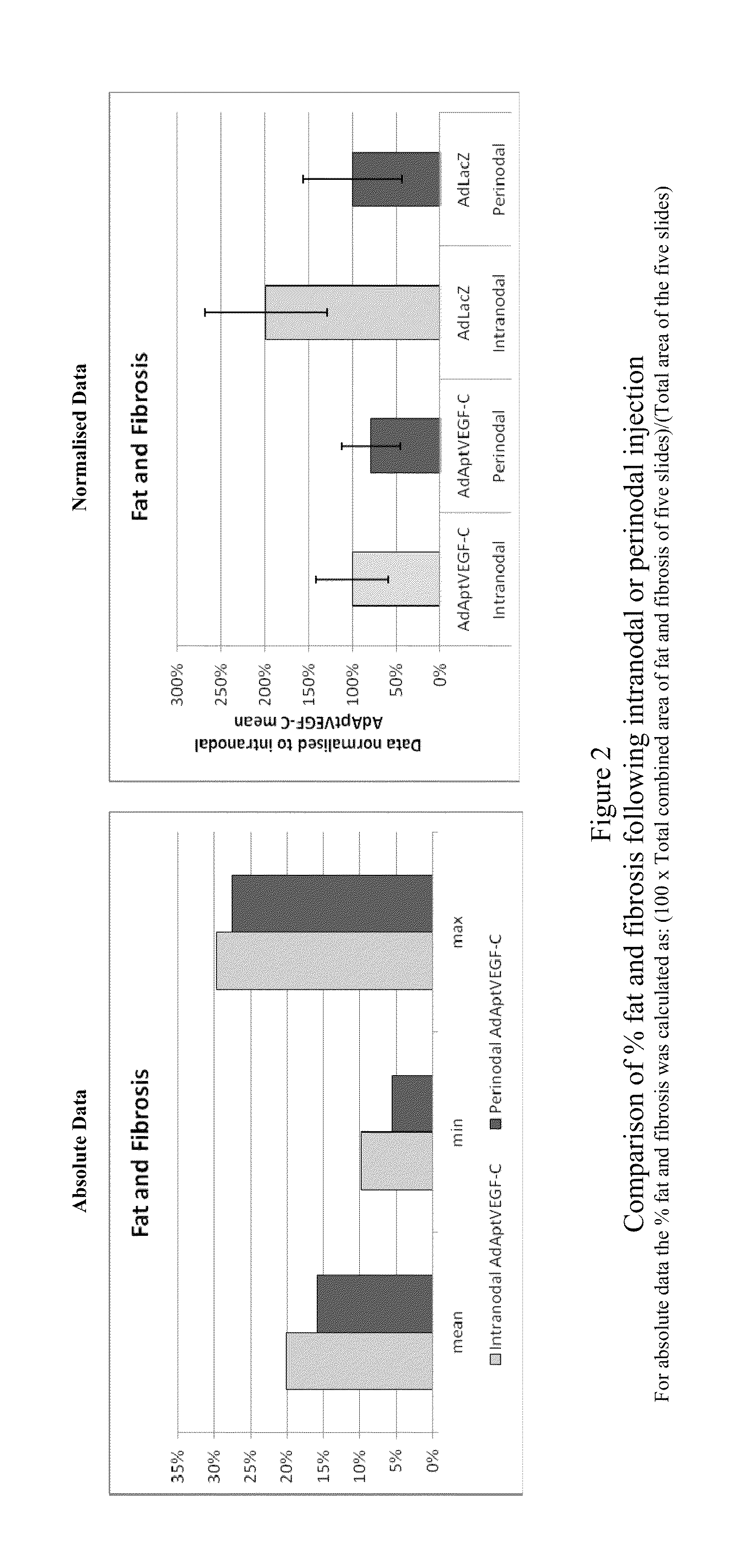Autologous lymph node transfer in combination with VEGF-C or VEGF-D growth factor therapy to treat lymphedema and to improve reconstructive surgery
a lymph node and autologous technology, applied in the field of autologous lymph node transfer, can solve the problems of affecting the survival of the skin flap after surgery, affecting the survival rate of the skin flap, so as to promote the survival of the lymph nod
- Summary
- Abstract
- Description
- Claims
- Application Information
AI Technical Summary
Benefits of technology
Problems solved by technology
Method used
Image
Examples
example 1
Summary
[0179]This experiment was devised to compare the efficacy and side-effects of administering VEGF-C via intranodal or perinodal injection.
Abbreviations
[0180]VEGF-C Vascular Endothelial Growth Factor C
[0181]VEGF-D Vascular Endothelial Growth Factor D
[0182]VEGFR-1 Vascular Endothelial Growth Factor Receptor-1
[0183]VEGFR-2 Vascular Endothelial Growth Factor Receptor-2
[0184]VEGFR-3 Vascular Endothelial Growth Factor Receptor-3
[0185]vp viral particles
[0186]Lymfactin AdAptVEGF-C
Details of Study Methods
[0187]Details of the studies used are given in Table 1
[0188]The data used for this comparison was limited to that obtained using:[0189]the AdApt vector for delivery of the VEGF-C gene[0190]a dose of 1×1011 vp or 1×1012 vp[0191]a duration of ˜2 months (49-91 days).
[0192]Due to these limitations it should be noted that not all animals treated within a particular study are included in this overview. Also, due to changes in study design, technical error, etc., data are not available for al...
PUM
| Property | Measurement | Unit |
|---|---|---|
| distance | aaaaa | aaaaa |
| distance | aaaaa | aaaaa |
| pressures | aaaaa | aaaaa |
Abstract
Description
Claims
Application Information
 Login to View More
Login to View More - R&D
- Intellectual Property
- Life Sciences
- Materials
- Tech Scout
- Unparalleled Data Quality
- Higher Quality Content
- 60% Fewer Hallucinations
Browse by: Latest US Patents, China's latest patents, Technical Efficacy Thesaurus, Application Domain, Technology Topic, Popular Technical Reports.
© 2025 PatSnap. All rights reserved.Legal|Privacy policy|Modern Slavery Act Transparency Statement|Sitemap|About US| Contact US: help@patsnap.com



